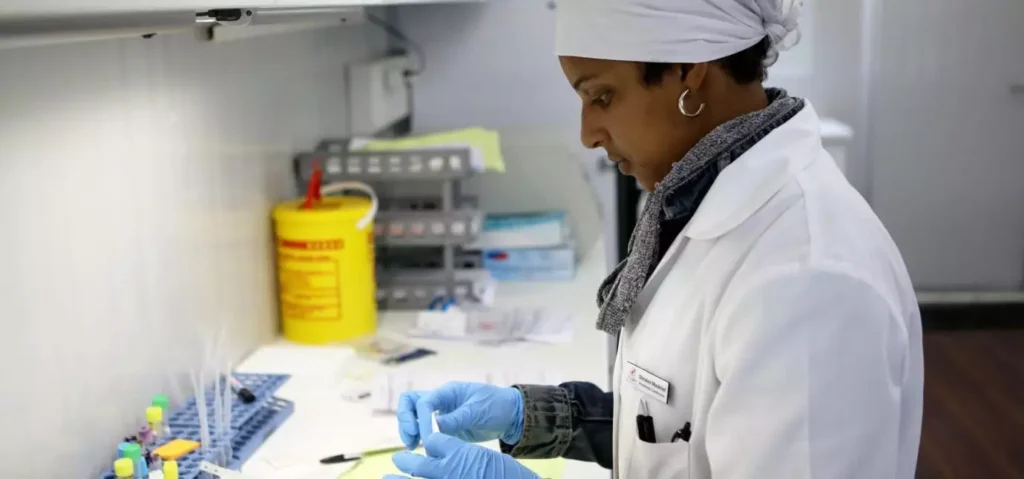New BPaLM regimen consisting of four drugs recently proved to be a safe, fast and effective method to reduce Multi-Drug-Resistant Tuberculosis (MDR-TB).
About BPaLM regimen:
It represents a significant advancement in the treatment of Multi-Drug-Resistant Tuberculosis (MDR-TB), aligning with India’s ambitious goal to eliminate tuberculosis by 2025.
Components of the BPaLM Regimen:
- Bedaquiline: An anti-TB drug developed for treating drug-resistant TB, it inhibits bacterial ATP synthase, essential for bacterial energy production, which helps in killing the TB bacteria.
- Pretomanid: A novel anti-TB drug approved for use in combination therapy, it works by interfering with the bacterial cell wall synthesis and is particularly effective against MDR-TB.
- Linezolid: An existing antibiotic that inhibits bacterial protein synthesis, and included in the regimen to combat MDR-TB, as it showed efficacy in the treatment of resistant strains.
- Moxifloxacin (optional): A fluoroquinolone antibiotic that inhibits bacterial DNA gyrase and topoisomerase IV, which are crucial for bacterial replication.
Key Features and Benefits:
- Traditional MDR-TB treatments can extend up to 20 months, while the BPaLM regimen shortens the period to about six months, improving patient adherence and treatment success.
- Clinical trials and evidence suggest that the BPaLM regimen is more effective compared to older MDR-TB treatment protocols in curing drug-resistant TB.
- It is designed to be less toxic than previous MDR-TB treatments, with shorter duration and combination of newer drugs to minimize adverse effects while maintaining high efficacy.
- It also reduces the overall cost of treatment, beneficial for both patients and the healthcare system, making the treatment more accessible and sustainable.
- This can enhance India’s ability to control and eventually eliminate MDR-TB, aligning with national goal of TB elimination by 2025 and achieving Sustainable Development Goals.
- Initiatives like the Nikshay Mitra program, which provides additional support to TB patients, complement the BPaLM regimen by addressing patient needs beyond just medical treatment.
Implementation and Rollout:
- The regimen is being introduced under the National TB Elimination Program (NTEP), which aims to strategically reduce the TB burden and achieve TB elimination by 2025.
- A nationwide rollout plan includes extensive training and capacity building for healthcare professionals to ensure safe and effective administration of the regimen.
- The regimen’s safety and cost-effectiveness were validated through thorough reviews and assessments conducted by the Department of Health Research and subject experts.
Ref: Source
| UPSC IAS Preparation Resources | |
| Current Affairs Analysis | Topperspedia |
| GS Shots | Simply Explained |
| Daily Flash Cards | Daily Quiz |
Frequently Asked Question:
What is the BPaLM regimen?
The BPaLM regimen is an advanced treatment protocol for Multi-Drug-Resistant Tuberculosis (MDR-TB).
What is the significance of BPaLM regimen?
It represents a significant advancement in TB treatment, incorporating a combination of newer drugs to improve efficacy and reduce treatment duration compared to traditional methods.
How effective is the BPaLM regimen compared to older MDR-TB treatments?
Clinical trials and evidence suggest that the BPaLM regimen is more effective than older MDR-TB treatments, offering a higher cure rate and better management of drug-resistant strains.



